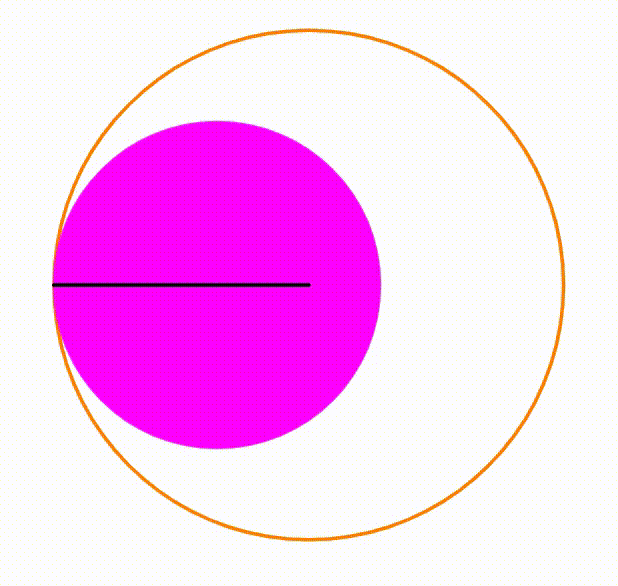Dynamic Geometry: P81
 The diagram shows an orange circle with radius
and a purple circle with radius
which is internally tangent to the orange circle. The cyan semicircle is moving freely so it's internally tangent to the orange semicircle and tangent to the purple circle at any moment. Using the three centers, we draw a black triangle. When the perimeter of the black triangle is equal to
, the area of the cyan semicircle is equal to
, where
and
are coprime positive integers. Find
.
The diagram shows an orange circle with radius
and a purple circle with radius
which is internally tangent to the orange circle. The cyan semicircle is moving freely so it's internally tangent to the orange semicircle and tangent to the purple circle at any moment. Using the three centers, we draw a black triangle. When the perimeter of the black triangle is equal to
, the area of the cyan semicircle is equal to
, where
and
are coprime positive integers. Find
.
The answer is 51.
This section requires Javascript.
You are seeing this because something didn't load right. We suggest you, (a) try
refreshing the page, (b) enabling javascript if it is disabled on your browser and,
finally, (c)
loading the
non-javascript version of this page
. We're sorry about the hassle.
Let the centers of the large circle, purple circle, and cyan semicircle be O , P , and C respectively, A B and D E be diameters passing through centers C and O respectively, and O C = k . By intersecting chords theorem ,
A C ⋅ C B r ⋅ r r 2 ⟹ k = D C ⋅ C E = ( 2 5 − k ) ( 2 5 + k ) = 6 2 5 − k 2 = 6 2 5 − r 2
The perimeter of △ O P C is given by:
C O + O P + P C k + ( 2 5 − 1 6 ) + 1 6 + r 6 2 5 − r 2 6 2 5 − r 2 2 r 2 − 6 2 r + 3 3 6 r 2 − 3 1 r + 1 6 8 ( r − 7 ) ( r − 2 4 ) ⟹ r = 5 6 = 5 6 = 3 1 − r = r 2 − 6 2 r + 9 6 1 = 0 = 0 = 0 = 7 Squaring both sides 24 is too big.
Then the area of the cyan semicircle is 2 4 9 π and p + q = 4 9 + 2 = 5 1 .